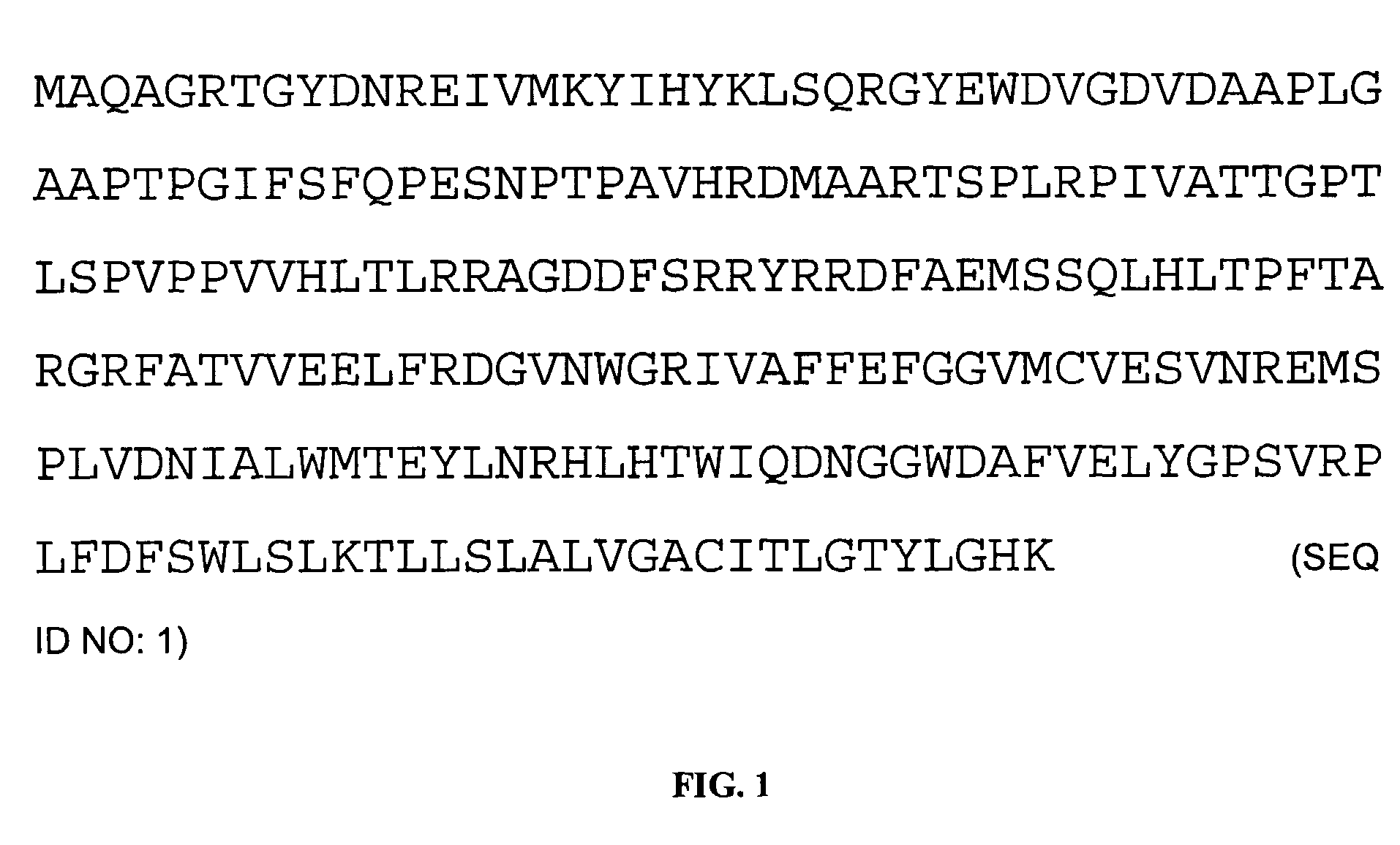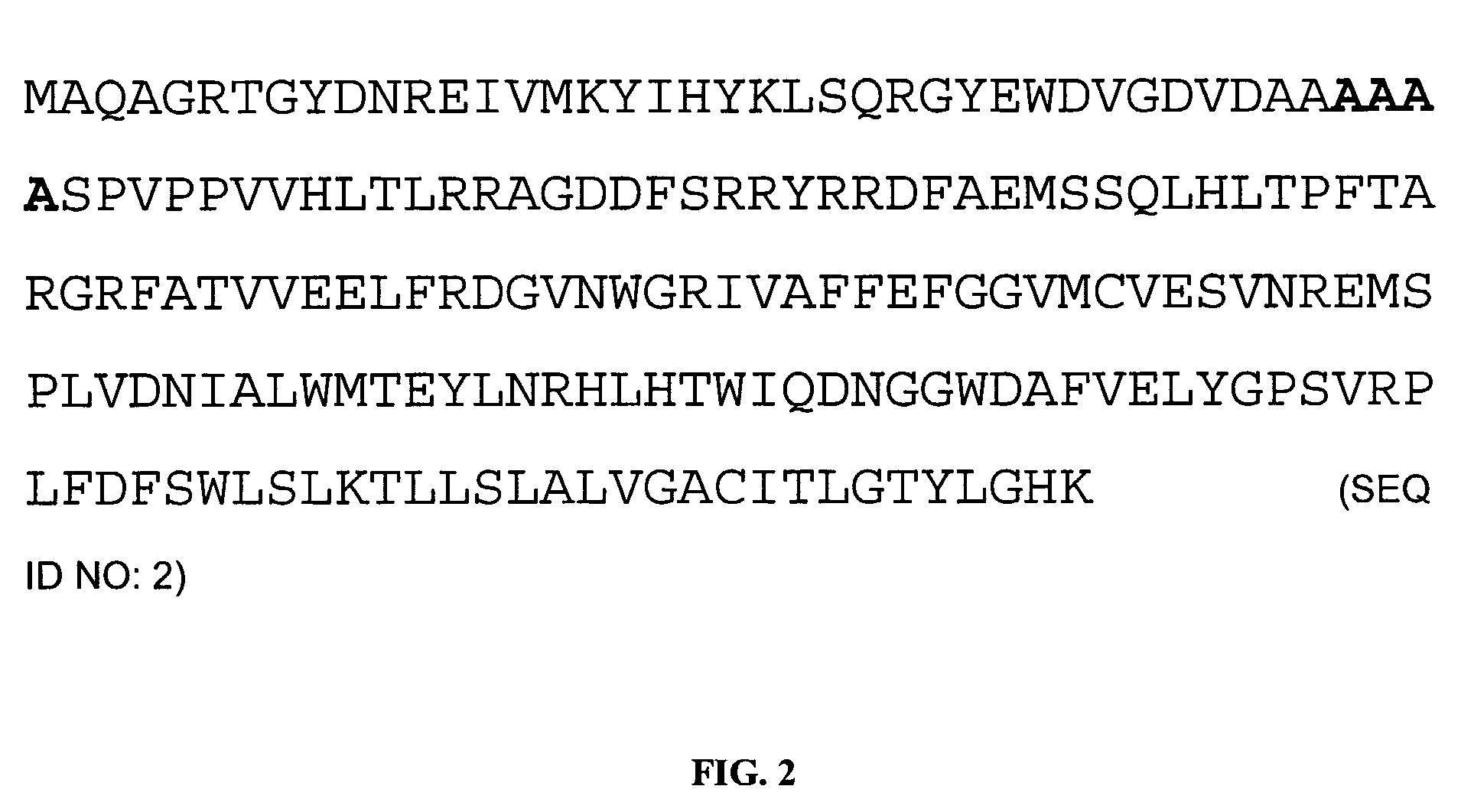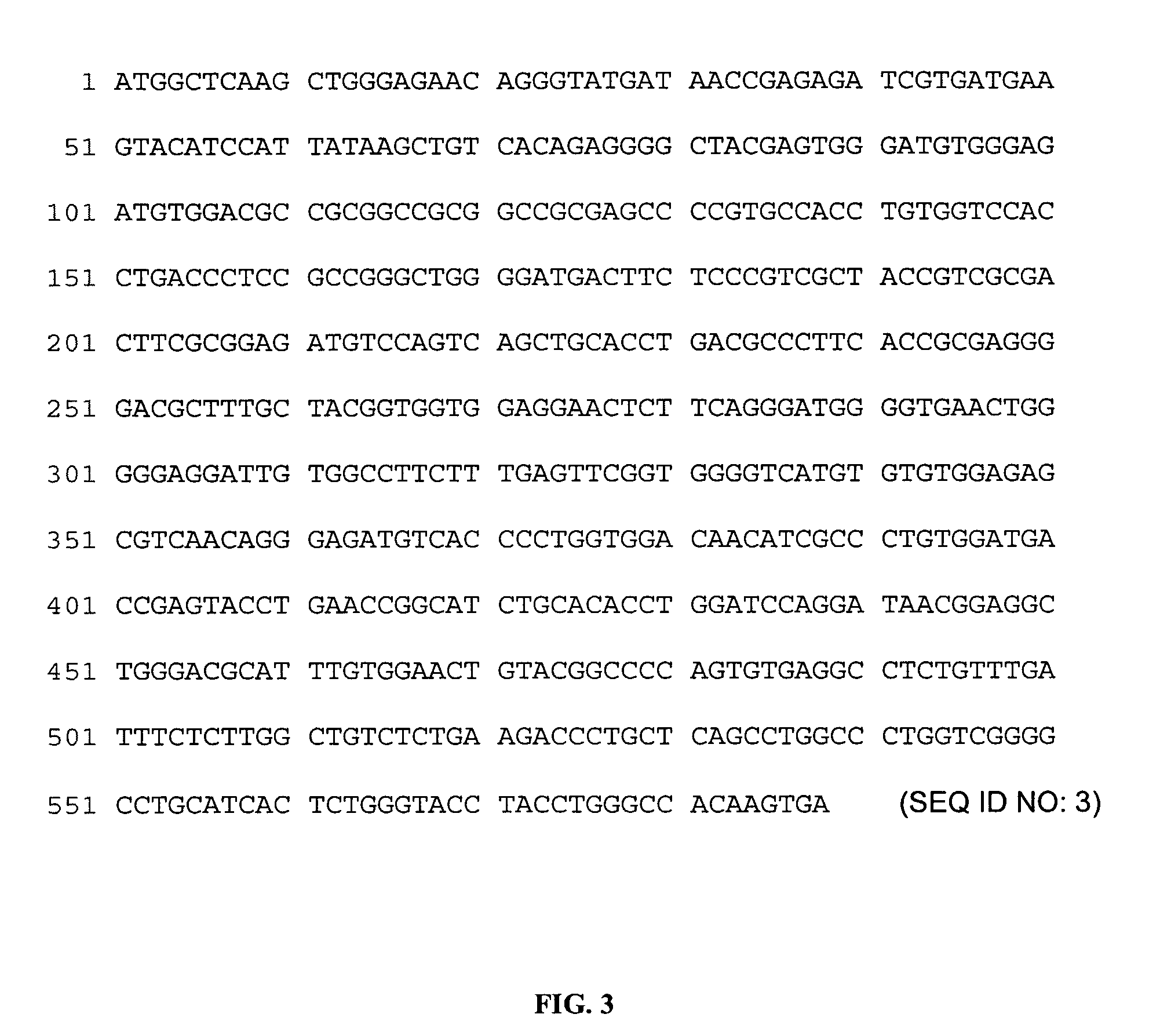Transactivation system for mammalian cells
a technology of mammalian host cells and transactivators, which is applied in the field of recombinant protein expression in mammalian host cells, can solve the problems of high variability in the productivity of different transactivator clones, time-consuming and laborious cell-line development using such systems, and achieve the effect of preventing or minimizing the adverse effects of the transactivator on host cell survival and proliferation
- Summary
- Abstract
- Description
- Claims
- Application Information
AI Technical Summary
Benefits of technology
Problems solved by technology
Method used
Image
Examples
example 1
Cloning and Expression of E1a and a Variant E1a Defective in RB Binding
[0175]The E1a gene from Ad5 is cloned by PCR from adenoviral DNA in the adherent HEK293 cell line (Stratagene) using the following oligonucleotide primers and cloned between the EcoR1 and Sal1 sites of pCI-neo (Promega) to construct pCI-E1a.neo.
[0176]
(SEQ ID NO: 6)Primer 1: CCCGAATTCGCCGCCACCATGAGACATATTATCTGCCAC(SEQ ID NO: 7)Primer 2: CCCGTCGACCTTATGGCCTGGGGCGTTT.
[0177]Alternatively, the gene is expressed from the RSV-LTR promoter in the plasmid pOPRSVI / MCS (Stratagene) between the Kpn1 and Not1 sites using the following amplification primers to construct an expression plasmid pRSV-E1a.
[0178]
(SEQ ID NO: 8)Primer 3: CCCGGTACCGCCGCCACCATGAGACATATTATCTGCCAC(SEQ ID NO: 9)Primer 4: CCCGCGGCCGCCTTATGGCCTGGGGCGTTT.
[0179]The tyrosine a amino acid 47 is mutated to histidine (47H) and the cysteine a amino acid 124 is mutated to glycine (124G) by PCR mutagenesis. To introduce the 124G mutation, the forward primer is:
[0180]...
example 2
Cloning and Expression of E1b-19K Protein
[0189]E1b-19K coding sequence is cloned from Ad5 DNA by PCR amplification as described in Example 1 but using the following primers:
[0190]
(SEQ ID NO: 13)Primer 8:CCCGAATTCGCCGCCACCATGGAGGCTT GGGAGTGTTT(SEQ ID NO: 14)Primer 9:CCCGTCGACCAACATTCAT TCCCGACGGT.
[0191]The PCR fragment is cloned between the EcoR1 and Sal1 sites of pExchange-1 (Stratagene) such that the gene is expressed from the hCMV promoter. The nucleotide sequence of the EcoR1-Sal1 DNA fragment is shown in FIG. 6. A selectable marker is inserted in the vector using LoxP mediated exchange (Stratagene) and the expression plasmid is used to transfect CHO-S cells as described in Example 1.
[0192]For analysis of protein expression by immunofluorescence, cells are seeded on coverslips, fixed in phosphate-buffered saline containing 4% paraformaldehyde, and the preparations stored in phosphate-buffered saline at 4° C. Cells are stained with rat monoclonal antibody to E1b-19-kDa (DP07L; EMD...
example 3
Cloning and Expression of Variant Hamster Bcl-2
[0194]The hamster Bcl-2 cDNA is cloned by PCR amplification using standard techniques using amplification primers based on the known sequence of hamster Bcl-2 (Genbank AJ271720). PCR mutagenesis is used to construct the deletion variant Bcl-2 coding sequence shown in FIG. 3.
[0195]Standard recombinant polymerase chain reaction methodology is employed to insert oligonucleotides encoding the HA epitope, (M)AYPDYVPDYAV (SEQ ID NO: 56), at the 5′-end of the protein-coding sequence of BCL-2 cDNA. The coding sequences are cloned into the vector pCI-neo (Promega) carrying a neomycin resistance gene or into a derivative vector carrying a hygromycin resistance gene. The authenticity of all constructs is verified by DNA sequencing.
[0196]The vectors are transfected into CHO-S cells, using Lipofectamine (Invitrogen) according to the manufacturer's instructions and stable transfectants obtained by selection in G418 or hygromycin B and identified by W...
PUM
| Property | Measurement | Unit |
|---|---|---|
| temperature | aaaaa | aaaaa |
| temperature | aaaaa | aaaaa |
| molecular size | aaaaa | aaaaa |
Abstract
Description
Claims
Application Information
 Login to View More
Login to View More - R&D
- Intellectual Property
- Life Sciences
- Materials
- Tech Scout
- Unparalleled Data Quality
- Higher Quality Content
- 60% Fewer Hallucinations
Browse by: Latest US Patents, China's latest patents, Technical Efficacy Thesaurus, Application Domain, Technology Topic, Popular Technical Reports.
© 2025 PatSnap. All rights reserved.Legal|Privacy policy|Modern Slavery Act Transparency Statement|Sitemap|About US| Contact US: help@patsnap.com



